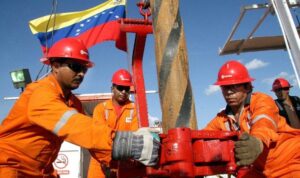Published 08/16/2024 16:21 | Edited 08/16/2024 16:56
The Israeli army has ordered the withdrawal of the Palestinian population in the Gaza Strip from areas considered humanitarian zones and the start of an operation in the neighborhoods of Khan Younis and Deir al-Balah.
The order from the Israeli Defense Forces (IDF) comes amid a second day of talks in Doha, Qatar, on a ceasefire and hostage exchange as negotiators seek to reach a deal to avoid Iranian retaliation.
“Due to many acts of terrorism, the exploitation of the humanitarian zone for terrorist activities, and the launching of rockets towards Israel from the neighborhoods in the north of Khan Younis, staying in this area has become dangerous,” the IDF said on its social media.
The areas from which Israel has removed the humanitarian zone label are known for their highest levels of population density. Neighborhoods such as al-Qarara, al-Mawasi, al-Jalaa, Hamad City and al-Nasser in Khan Younis, and Blocks 89-2356 in Deir al-Balah, are home to 1.7 million internally displaced people, according to international humanitarian organizations such as Oxfam.
Last Tuesday (13), the United Nations Relief and Works Agency for Palestine Refugees in the Near East (UNRWA) reported that approximately 84% of Gaza’s territory has been under evacuation orders since October 7.
The far-right government of Prime Minister Benjamin Netanyahu’s punishment of the Palestinian people, following the Hamas attacks on October 7, reached the mark of 40 thousand deaths of the population in the Gaza Strip.
The Haaretz newspaper reported that the number of Palestinians killed since the beginning of the war, 2% of the entire population of the Arab enclave, represents the bloodiest massacre of the 21st century.
Leaflets warn population that has not yet evacuated
Israeli planes dropped thousands of sheets with warnings for the population of the respective neighborhoods that had not yet moved to begin the evacuation.
“To all residents and displaced people who are still present in Blocks: 899, 2356, 36, 127, 126 and 25, in the neighborhoods east of Deir Al-Balah, Al-Qarara, Al-Mawasi. Al-Jalaa, Hamad City and Al-Nasr: The IDF will act forcefully against terrorist organizations in your area. For your safety, you must immediately evacuate to the new humanitarian zone,” the notice, signed by the IDF, states.
The blocks mentioned have an area of 12.25 km2, approximately the size of cities such as Jundiaí (SP), Anápolis (GO) and Petrolina (PE).
The recurring forced displacements by the Israeli army, in line with the scenario of devastation throughout the strip, give a dystopian tone to the tragedy experienced by the Palestinian people.
Second day of ceasefire talks in Doha
On Friday, the second day of negotiations to reach a ceasefire agreement in the Gaza Strip, a joint statement by Qatar, the United States and Egypt said the Americans had presented a proposal to Israel and Hamas.
“The proposal builds on the areas of agreement reached last week and fills in the remaining gaps to allow for rapid implementation of the agreement,” the White House said in a statement, also signed by mediators Qatar and Egypt.
US President Joe Biden said “we’re closer than we’ve ever been” to a ceasefire, “but we’re not there yet.” “I don’t want to jinx anything … we could have something,” he told reporters in the White House Oval Office. “It’s much, much closer than it was three days ago. So fingers crossed.”
Hamas leaders, however, told AFP on Friday they would not accept Israel’s “new conditions” in the proposal put forward during the talks in Doha. Those demands would include keeping Israeli troops in the Gaza Strip along the border with Egypt, said one of those involved, who asked not to be named.
A senior Hamas commander told Reuters news agency that the US proposal did not meet the points agreed at the last meeting on July 2.
Iranian retaliation
On Tuesday, three Iranian officials told the Times of Israel that only a ceasefire agreement prevented Iran from directly retaliating against Israel for the assassination of Hamas leader Ismail Haniyeh in Tehran.
According to the Israeli newspaper, one of the sources said that Iran, along with allies such as Lebanon’s Hezbollah group, would launch a direct attack if negotiations for a ceasefire and hostage release between Israel and Hamas fail or if it perceives that Israel is dragging out the negotiations.
The sources did not say how long Iran would allow the negotiations to progress before taking action. The country has also reportedly been engaged in intense talks with Western countries and the United States in recent days over ways to calibrate retaliation.
Source: vermelho.org.br

